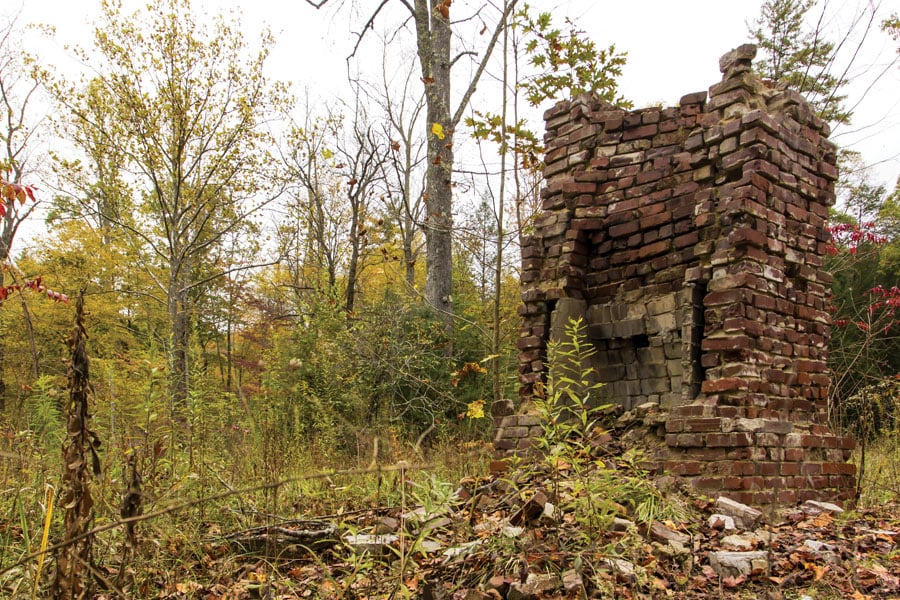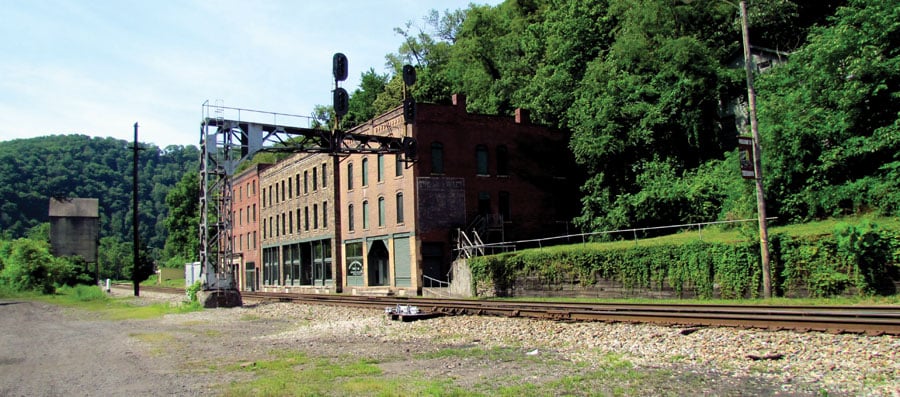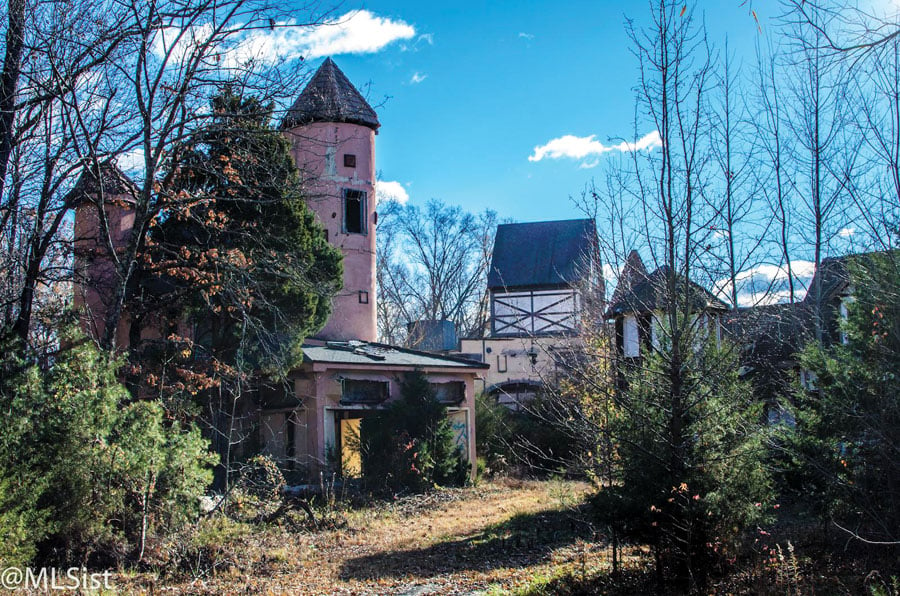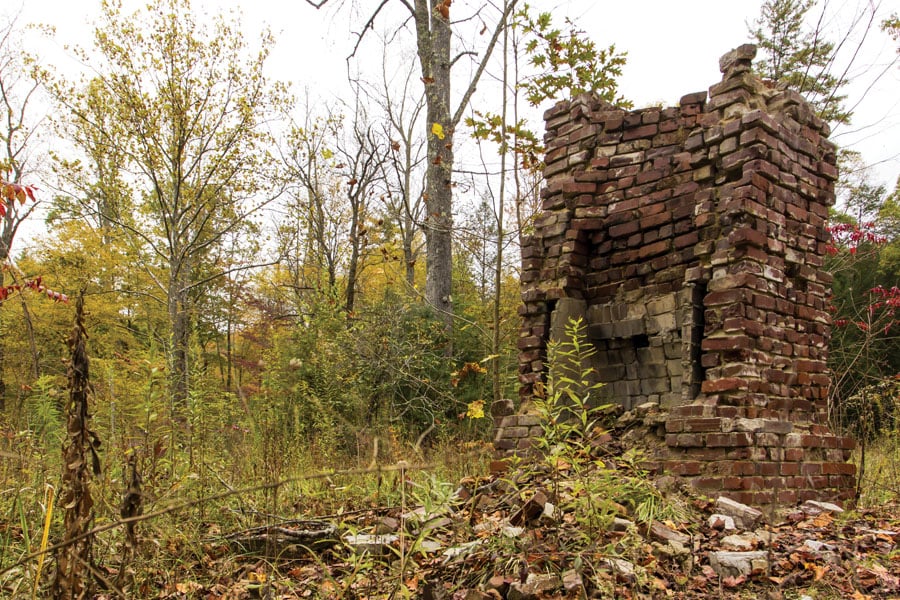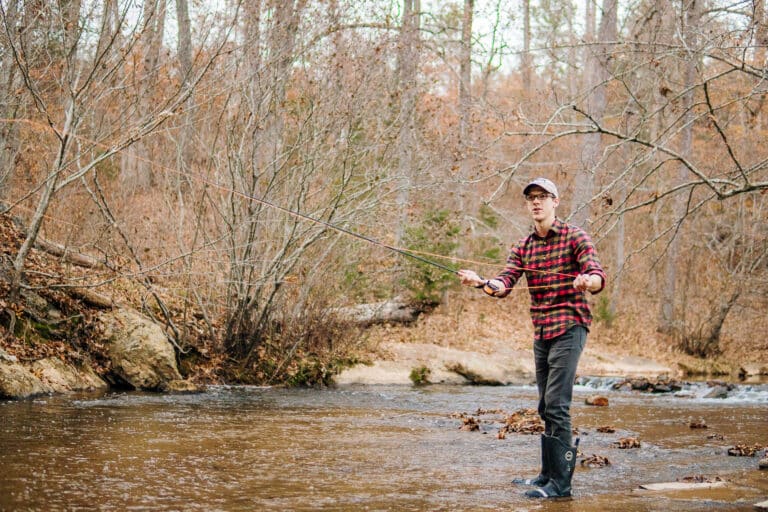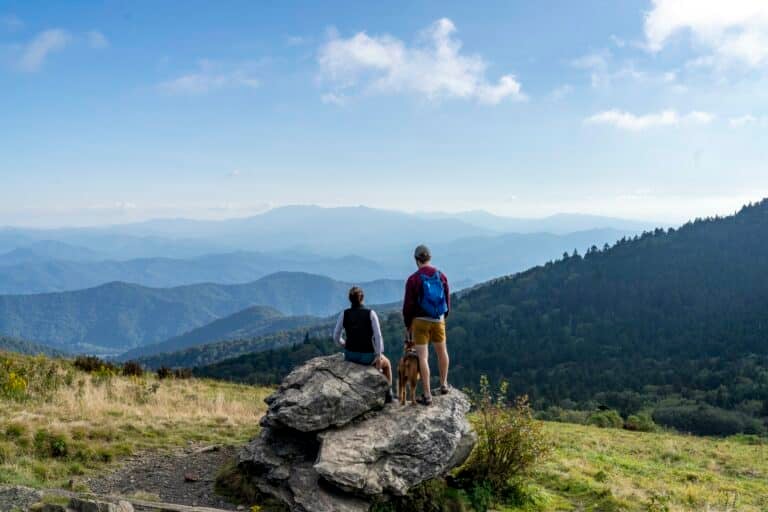There’s a lot to learn from big cities with active crowds and busy intersections. Hiding underneath all that hustle and bustle, though, lies yet another lifetime of information on places that only exist as shadows of their former glory. Ghost towns are civilizations that thrived in a different era, but met their match somewhere along the way. Most of the time, these places haven’t disappeared completely; instead they feature broken-down hints of more fruitful times. Throughout the Blue Ridge, ghost towns stand in various states of ruin and restoration. A few are celebrated as historical gems, and others remain mysterious. Many of them are open for exploration. Here are a few of the region’s most iconic ghost towns.
Thurmond, West Virginia
The New River Gorge in West Virginia attracts adventurers from all over the Blue Ridge, thanks to its sheer abundance of premium whitewater and sandstone. These prospects alone make this National River an essential destination for anyone with merely an inkling of outdoor enthusiasm, but the area gets even more interesting when we take a look at its history.
Once upon a time, before its sporting opportunities or its picturesque steel arch bridge reached their present level of fame, the Gorge was a hub for all things coal. Thurmond, a name that today’s paddlers likely associate with the access point for the Upper section of the New River, used to hold greater significance as a regional economic champion. According to the National Park Service, which now owns Thurmond’s land, the town became the most popular stop on the Chesapeake & Ohio Railroad by the early 20th century and gathered the largest revenue along the entire railway. Thurmond obviously didn’t retain this success, due mainly to a combination of the Great Depression and the railroad’s switch from coal to diesel fuel. Without those crucial coal sales, the town failed.
Thurmond’s past achievements are hard to believe today, when that booming population is nowhere to be seen anymore. The National Park Service, however, has worked to preserve many of the town’s buildings so that people like former Lewisburg, WV resident Elizabeth Wilson can appreciate Thurmond as an “untouched sliver of American history”. The restored remnants of Thurmond make this ghost town an easy one to visit and explore, so don’t forget to fit this into your rest day plans at the NRG.
Blue Heron, Kentucky
Like Thurmond, Blue Heron once paved its way as a riverside coal-mining town. A branch of the Stearns Coal and Lumber Company settled along Kentucky’s Big South Fork River in 1937, by the National Park Service’s records, and established Mine 18 that would then support a large community of rural miners and their families. After thirty years the company began to lose profits and chose to move elsewhere. Without the work or income that the mine provided, Blue Heron’s occupants soon followed suit.
The National Park Service has also kept Blue Heron as an historical site, but in a different way than with Thurmond. None of Blue Heron’s original buildings still exist after years of decay, which led the NPS to represent them in the form of exposed metal shells modeled after the actual structures. Each of the models makes up part of the Blue Heron Mining Community outdoor museum, which visitors can walk through to get an idea of what used to thrive there and to hear recordings of the town’s old inhabitants. Visitors can easily access Blue Heron by train from Stearns, KY. A 6.5 mile trail, called the Blue Heron Loop, begins at the site and offers an extended tour of the ghost town’s outer limits.
Matildaville, Virginia
The name of this ghost town certainly rolls off the tongue, but apparently that wasn’t enough to keep it on the map. Matildaville came about during George Washington’s grand plan to construct a canal around the Virginia side of Great Falls, so the NOVA History Notes state. The town’s first residents began to settle by the falls around the end of the 18th century, throughout the early stages of planning for the future Potomac Canal. The idea was for Matildaville to sit along the riverbank next to where the canal basin would soon be built, so that it could serve as a commercial stop for the passing ships.
In all likelihood, that would have made for a tremendous pairing had Washington’s idea actually worked. The Potomac Canal didn’t pan out as intended, because even the President can’t control nature. Water levels in the area were ultimately too low to sustain a full-time canal.
No Potomac Canal ultimately meant no Matildaville, since the town was only built to align with the river plans. The Great Falls Manufacturing Company later tried to give the land new life in the mid 1800s, but failed to get business moving without the canal in place. Without much reason to stick around anymore after all that misplaced effort, Matildaville’s tired residents finally headed elsewhere. The ghost town is now part of Great Falls National Park, and the old main road has become a trail that provides hikers with a special front-row view of the ruins.
Elko Tract, Virginia
Elko Tract has an especially fascinating history because it has more than one tale to tell. This small ghost town outside of Richmond was once a run-of-the-mill farming community in rural Virginia, but Henrico Monthly reporter Rich Griset talks about a time during World War II when the U.S. military took over the area as part of an elaborate battle scheme. The plan involved leveling the town and turning it into an entirely fake air force base, complete with imitation buildings and runways, as a means of distracting their enemy from the real location nearby. The military then took down the temporary structures after the war and left no remains.
However, Elko Tract as it exists today does in fact feature a number of ruins. Where did that water tower come from, and why these aimless roads?
Cue part two of the story, in which the state began to build an African-American mental hospital on the former military land. The government pulled its funding for the project less than halfway through, but not before that water tower, a sewage treatment plant, and a basic road system already stood strong. These pieces of the old plan still hold their ground in the backyard of the Richmond International Airport. Put the breaks on visiting Elko for now—word is that the road leading to the town is blocked off and thoroughly marked with No Trespassing signs. Instead, to quench a little curiosity, try to spot the water tower peeking above the trees just east of RIC.
Sherwood Forest, Virginia
Didn’t anybody tell these people not to leave their pirate ship just lying around? Looks like its former captain, the Renaissance Entertainment Corporation, abandoned it alone in the woods among the trees and castles. What a waste.
This old ship has been hiding away near Fredericksburg, Virginia, says journalist Pablo Maurer. It’s part of a Renaissance Fair that once occupied what locals called the Sherwood Forest, a patch of land that actually dates back to the Washington family. The fair was only in operation from 1996 to 1999. The REC apparently didn’t have the finances to hold it up, so they headed off in search of more prosperous ventures and left pretty much the whole camp behind.
Castles, signs, shops, and—of course—the pirate ship, all remain in relatively good condition, considering the 20 years that have passed since the fair last had a paying customer. It’s best to appreciate Sherwood Forest through pictures, though, because this is another location that it is very much against the law to visit. You’ve been warned.
Elkmont, Tennessee
The remains of Elkmont are still standing today because of the very thing that brought this ghost town to its knees in the first place: the Great Smoky Mountains National Park. Elkmont was born to Tennessee in the early 1900’s as the headquarters for the Appalachian Club, according to representatives of GSMNP. The club consisted of a group of affluent Blue Ridge families, who built cabins and a clubhouse for themselves on the Elkmont land. It soon became a highly desirable retreat site for those with enough money and prestige to snag the opportunity.
But pretty soon, the plan for a national park in the Smokies began to catch fire. In order for the park to exist, Elkmont had to close its doors and sell the land to the state government. Members of the community managed to pull off the deal, and even worked out life lease agreements in the process.
The Appalachian Club is now part of the Great Smoky Mountains National Park. The National Park Service has worked with the National Register of Historic Places to protect the area and to make restoration plans for 19 of its buildings. Elkmont is easily accessible by way of the up and running Elkmont campground, reportedly one of the most popular camping spots in the park.
No Business, Tennessee
Yes, you read that right. The people who first came here must have known that their settlement was doomed from the start. Whether No Business’ pioneers meant this ominous title as a threat to others or as a comment on their own tough luck, it sure doesn’t sound promising. This ghost town seems to have lived up to its name.
But at one point in time, as the National Park Service helps us to remember, No Business actually had a fair amount of business. The town began to boom throughout the turn of the 19th century, when a man named Richard Slaven organized a community there on land that the government granted him after the Revolutionary War. No Business ended up lasting for almost two centuries beyond that, and became a rather populated place considering the general seclusion of the area.
Eventually that isolation began to take a toll and drove No Business, well, out of business. The remains of No Business—just piles of stone ruins, mainly—are quite hard to find, which goes to show just how removed this town really was. With a good bit of effort and some solid walking shoes, you can reach No Business by the Big South Fork River near Station Camp.
Lost Cove, North Carolina
Lost Cove, another fitting name for a town of the past. The Southern Appalachian Highlands Conservatory recently bought this land and is working on including it as part of the Pisgah National Forest. This old river town, the SAHC explains, had developed during the Civil War era and started out as an agricultural community with a little illicit moonshining on the side. The railroad arrived a couple decades later, which helped transform Lost Cove into a modest hot spot for logging and mining business.
Unfortunately for Lost Cove’s newfound success, that business boom didn’t last for long. Uncle Johnny’s Nolichucky Hostel, a nearby traveler’s lodge, claims that Lost Cove eventually fizzled in the 1950’s after the same railroad that helped them thrive began to breeze past the town instead. Without a reliable train system, the area turned out to be too remote for comfort or sustainability.
For now, Lost Cove is only accessible by hike on the Lost Cove Trail off of Flat Top Road near Burnsville, NC. The Southern Appalachian Highlands Conservatory also organizes guided hiking trips to the ghost town along this trail.
Ellenton, South Carolina
The people of Ellenton loved their home so much that they wrote a play about it. Really. The best way to understand what happened at Ellenton, a ghost town near Aiken County in South Carolina, is to take a look at the script of “I Don’t Live There Anymore: The Ellenton Story” by Lawrence Holofcener.
The play is set in 1950, when Ellenton’s citizens discover that the government needs to clear out their town in order to build a hydrogen bomb development site there. It is a true story, based on the experience of an uprooted society.
Most of Ellenton was razed to the ground during the transition, as per the play’s historical background information, so there are mainly only curbs, driveways, road signs, and concrete debris to serve as a desolate reminder of that community. Most of that is also off-limits and secured behind the walls of the Westinghouse Savannah River Site, an environmental research program that took the place of the nuclear zone.
